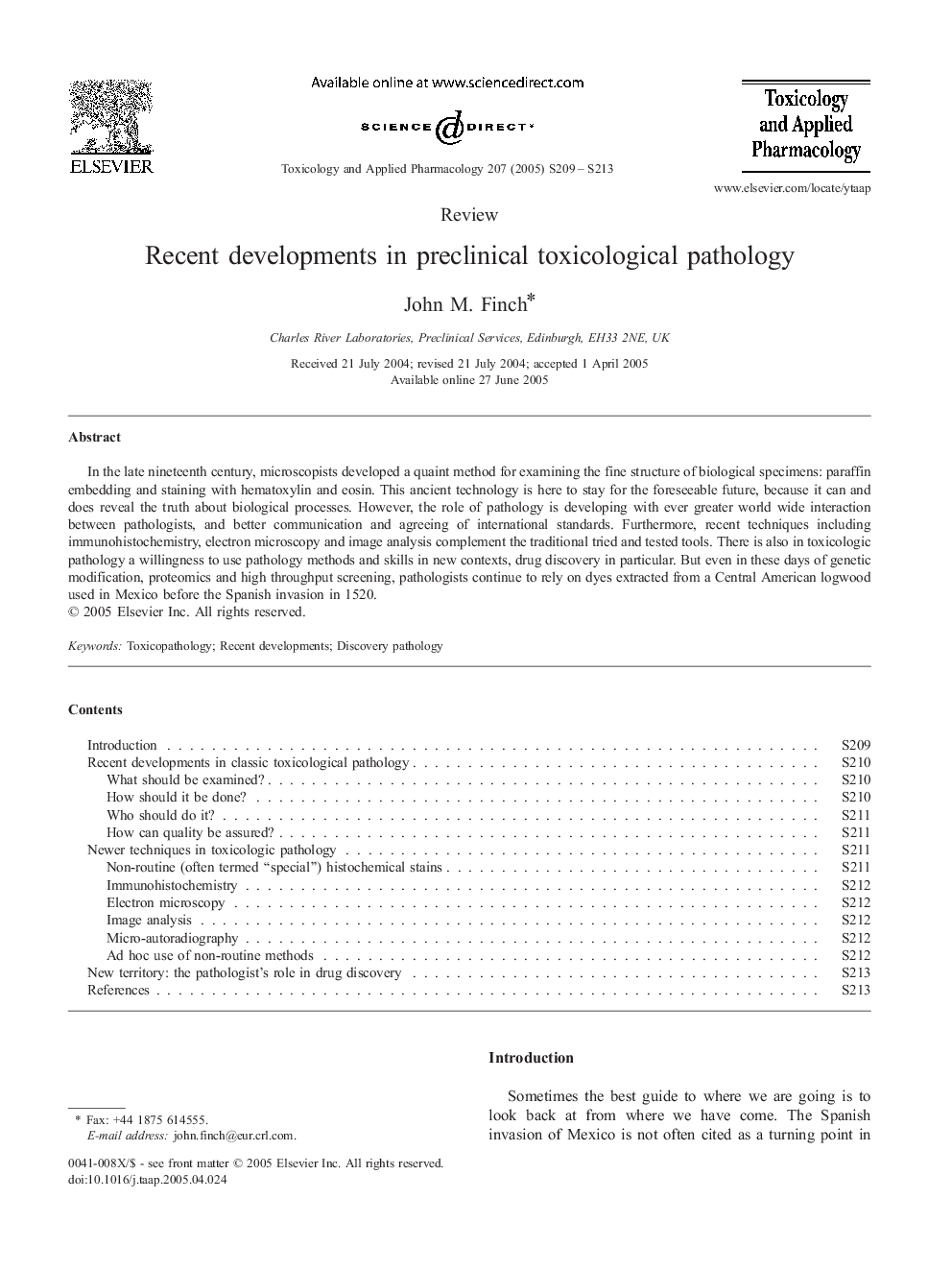| Article ID | Journal | Published Year | Pages | File Type |
|---|---|---|---|---|
| 9017744 | Toxicology and Applied Pharmacology | 2005 | 5 Pages |
Abstract
In the late nineteenth century, microscopists developed a quaint method for examining the fine structure of biological specimens: paraffin embedding and staining with hematoxylin and eosin. This ancient technology is here to stay for the foreseeable future, because it can and does reveal the truth about biological processes. However, the role of pathology is developing with ever greater world wide interaction between pathologists, and better communication and agreeing of international standards. Furthermore, recent techniques including immunohistochemistry, electron microscopy and image analysis complement the traditional tried and tested tools. There is also in toxicologic pathology a willingness to use pathology methods and skills in new contexts, drug discovery in particular. But even in these days of genetic modification, proteomics and high throughput screening, pathologists continue to rely on dyes extracted from a Central American logwood used in Mexico before the Spanish invasion in 1520.
Keywords
Related Topics
Life Sciences
Environmental Science
Health, Toxicology and Mutagenesis
Authors
John M. Finch,
